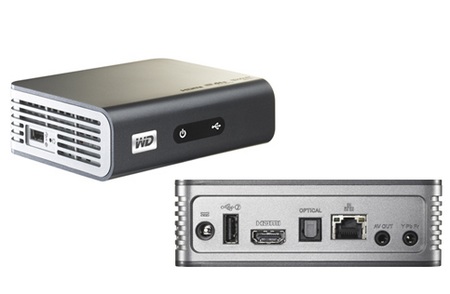Although the patent was issued in the previous year to Alan Blumlein of EMI, on March 12,1932, Bell Laboratories produced the first stereophonic recording (that still survives) using the 45/45 groove format. They recorded Leopold Stokowski and the Philadelphia Academy of Music and as it is with new standards and corresponding R&D investments, a furious battle pursued between the various stereo formats in use at the time. The 45/45 format eventually won but it wasn't until 1957 that the first commercially available stereo records were produced, a mere 26 years after the patent was issued. Granted there were other issues that needed to be standardized (speed, size, and equalization), but it does seem looking back today that this took an inordinate amount of time to do so.
Fortunately, things move a bit faster today. November 26, 1996, marked the beginning of a new format that transformed audio: the MP3. With this format, the contents of an entire compact disc could be stored on a small hand-held device. Tossing quality out the window in favor of convenience, MP3s became an instant success and are still in use everywhere today.
But because of the inherent compression, certain musical elements are lost between the original CD format and the MP3 format, so much so that audiophiles and musicians alike consider MP3s to be not much above that hideous and torturous elevator music. Enter the higher-bit and higher-frequency formats.
Now, there is a was raging on about what format should be used to record music. While this seems to be a simple issue, there are again huge corporations with vested interests in recovering investments for their particular format. The current logic is to use a loss-less method instead of the MP3 (lossy) approach.
I have taken all of my CDs and stored them on my server in FLAC format while this debate rages on. Again, not much more than really good elevator music compared to the vinyl medium it is intended to replace, streaming this format is hugely convenient and I foresee that for this convenience alone that compromises will be made.
People are fundamentally lazy in that if there is a way to do something easier, faster, cheaper, but not necessarily better, we will opt for ease of use. Playing time has also proven to be a selling point so with the advent of streaming audio, playing time is only limited to the size of your record collection.
I have recently purchased a low-end streaming media player: the Western Digital TV Live media center. It is connected to my router via a hard-wired CAT-5e cable as is my streaming media server. This provides me with endless possibilities of my CD collection from FLAC files ripped to the server and also to music stations available through the Internet. The quality of the playback is remarkably good considering the modest $100 investment, although I would qualify that it too does not really sound like a good high-end piece of gear.

Another great contender at ten times the price is the Oppo BDP-95, a great little Blu-Ray player with streaming audio playback capabilities. With far better D/A converters, accompanying electronics, and stereo outputs than the WD Live TV, this little gem is another best-bang-for-the-buck unit.
The world of streaming audio is here to stay. Much like the MP3, it will catch on fast and younger audiophiles will embrace this change quicker than us old guys. Hopefully, the format finally selected will take us out of the old locked-in 16-bit 44KHz recording format of the early 1980s and once again return us to listening to music.
I look at digital media in its current form much like stereo was in its infancy; there are still a lot of hurdles that we must jump through to make this format musical. Until then, we can still spin that old inconvenient king of formats: VINYL.
Yours for higher fidelity,
Philip Rastocny
I do not use ads in this blog to help support my efforts. If you like what you are reading, please remember to reciprocate, My newest title is called Where, oh Where did the Star of Bethlehem Go? It’s an astronomer’s look at what this celestial object may have been, who the "Wise Men" were, and where they came from. Written in an investigative journalism style, it targets one star that has never been considered before and builds a solid case for its candidacy.
- Althea: A Story of Love
- Build an Extreme Green Composter
- The Extreem Green Guide to Wind Turbines
- Build and Extreme Green Hot Water Solar Collector
- The Extreme Green Guide to Solar Electricity
- The Extreme Green Guide to Improving Mileage
- Meditation for Geeks (and other left-brained people)
- Build an Extreme Green Raised Bed Garden
- Build an Extreme Green Rain Barrel
- Build an Extreme Green Squirrel-Proof Bird Feeder
- Extreme Audio 1: House Wiring
- Extreme Audio 2: Line Filtering
- Extreme Audio 3: Chassis Leakage
- Extreme Audio 4: Interconnect Cables
- Extreme Audio 5: Speaker Wires
- Extreme Green Organic Gardening
- Extreme Green Organic Gardening 2012
- The Extreme Green Appliance Buying Guide




No comments:
Post a Comment
To comment on this blog, you must first be a member. All comments are moderated.
Note: Only a member of this blog may post a comment.